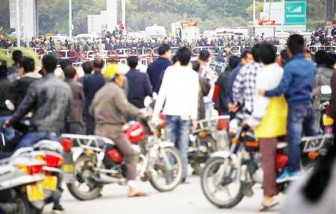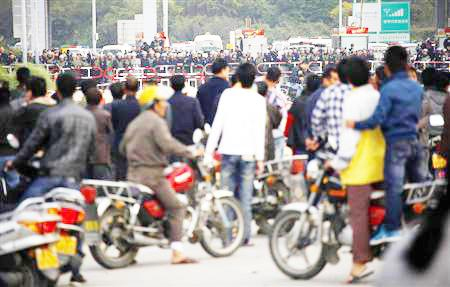HONG KONG, (Reuters) – Like battle-hardened boxers, China’s Communist Party leaders are leaning back on the ropes, patiently absorbing the blows from angry village protesters who have grabbed headlines but lack a knockout punch.

Similar social uprisings have floored leaders from North Africa and the Middle East but China’s leaders, and the country itself, are made of sterner stuff.
Analysts say it would take an unlikely combination of blows for any semblance of an Arab Spring to take root in China: collapse of the economy, a breakdown of the Party system, a comprehensive loss of trust in the central government, and a cohesive anti-party movement in rural and urban areas.
Still, China has endured headlines that would make many an Arab leader tremble.
Villagers in Wukan in south China chase off local officials and barricade themselves in for a 10-day standoff. Thousands march in Haimen city less than 160 km (100 miles )away to protest against a power plant project. Workers stage a sit-in in Dongguan city to the west, demanding backpay after their paper plant closed down.
But while Arab Spring protesters have scored knockout blows this year, economic conditions appear to have China on course for a comfortable points decision.
After the wave of Arab Spring revolutions, analysts began looking for markers that might be useful for predicting the next uprising. The most common characteristics included a disproportionately large segment of the population aged under 25, stagnating GDP per capita, and widening income inequality.
China doesn’t stand out in any of those categories. The one-child policy means the country is aging rapidly, and the bigger worry is potential shortages of young workers. GDP per capita is rising steadily. Income inequality, although wide, may narrow as Beijing mandates large minimum wage increases.
Some 80 million Communist Party members and millions more who have benefited from China’s economic boom have little interest in spreading social unrest that would undermine those gains. Among China’s vast bureaucracy, where college graduates are competing for jobs, and the People’s Liberation Army, appetite for change is even lower.
“With civil servants and military, with their support, even when there is extensive discontent among the general public, the regime can still maintain its rule for quite a long period of time,” said Kin-man Chan, associate professor at the department of sociology at Chinese University of Hong Kong.
SPARK WON’T START A
PRAIRIE FIRE
Other factors favour the Party over the protesters, who lack central organisation.
These include strong political cohesion, a system that reinforces support for the central government over local officials, a massive police force and fairly tight controls on traditional and social media.
The last time the Politburo Standing Committee was seriously split was in 1989, a divide that gave time for the democracy movement centred on Tiananmen Square to snowball. Paramount leader Deng Xiaoping eventually stepped in, Party secretary Zhao Ziyang was sacked, and the movement was crushed on June 4 that year in a bloody military crackdown that killed hundreds, perhaps thousands.

